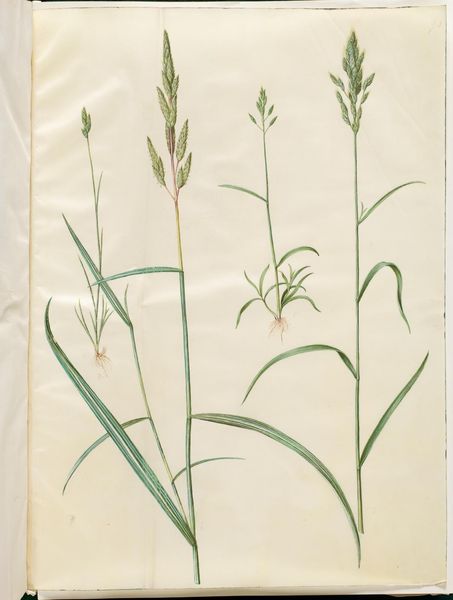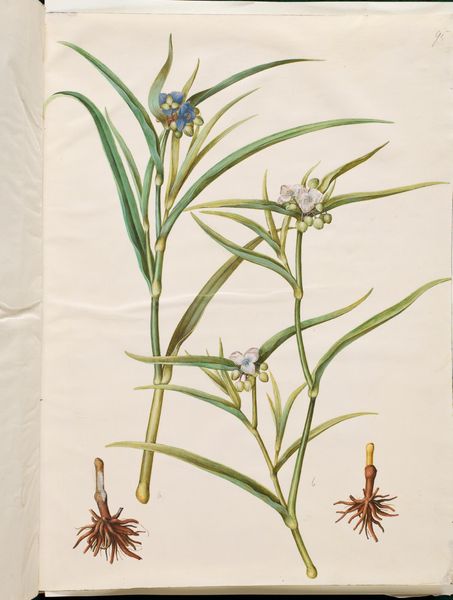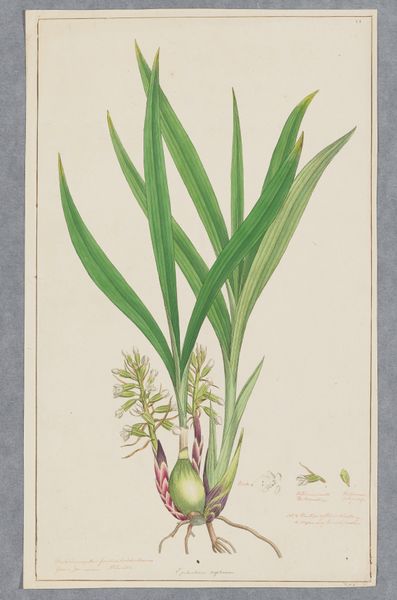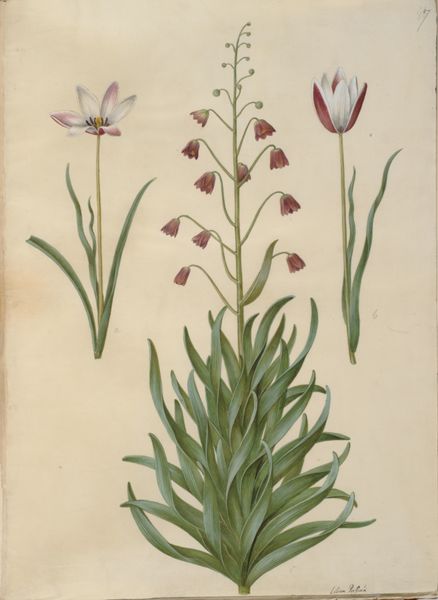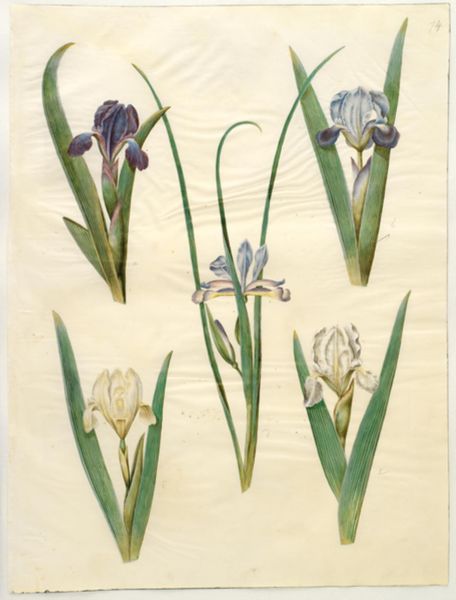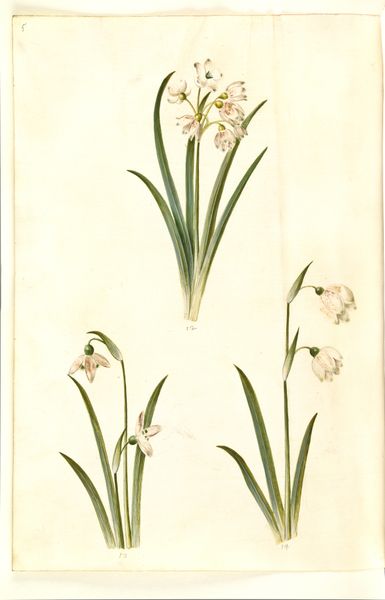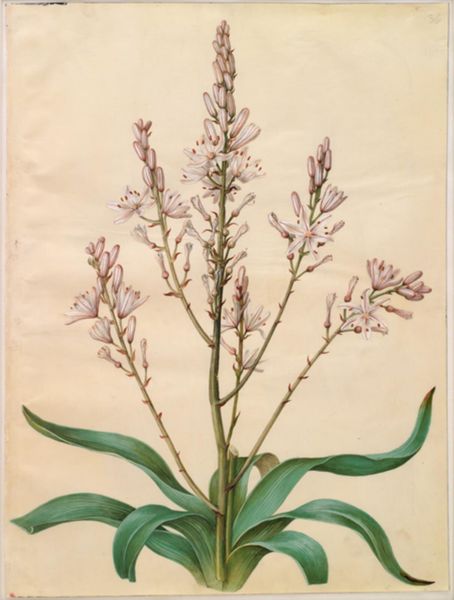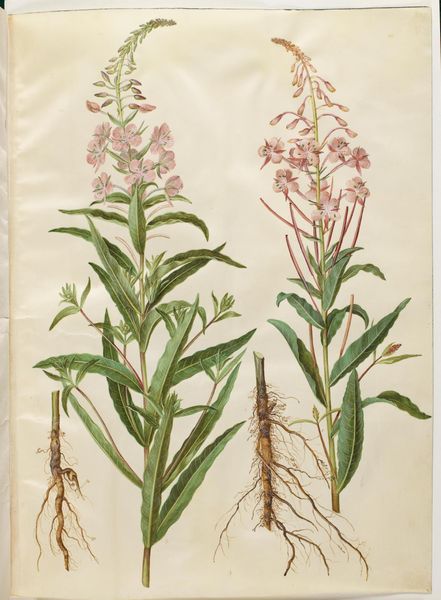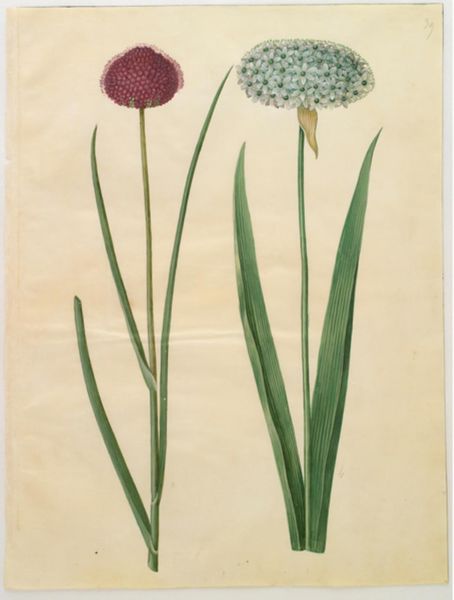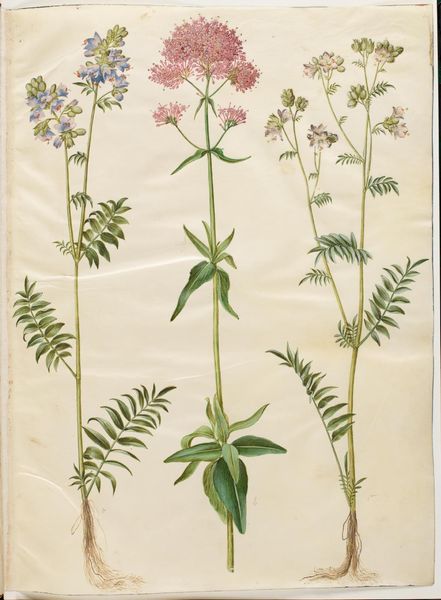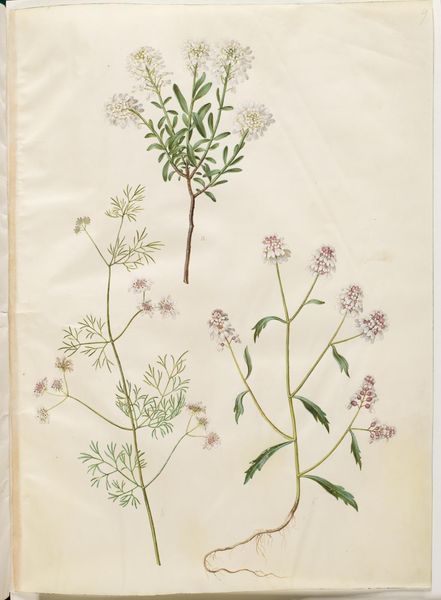
Butomus umbellatus (brudelys); Phragmites australis (almindelig tagrør) 1649 - 1659
0:00
0:00
drawing, gouache, watercolor
#
drawing
#
narrative-art
#
dutch-golden-age
#
gouache
#
watercolor
#
botanical art
#
watercolor
#
realism
Dimensions: 505 mm (height) x 385 mm (width) (bladmaal)
Editor: This watercolor and gouache drawing from somewhere between 1649 and 1659 is called "Butomus umbellatus (brudelys); Phragmites australis (almindelig tagrør)" by Hans Simon Holtzbecker. I’m struck by the delicate detail. What’s your take on this botanical study? Curator: From a materialist perspective, I see a fascinating intersection of art, science, and labor. Consider the gouache and watercolor – pigments meticulously ground, sourced perhaps from specific regions, requiring skilled hands to transform raw materials into tools for representation. The paper itself would have been a valuable commodity. How does the economic reality of 17th-century Holland shape what is included, and how it's depicted? Editor: That’s interesting. So, you’re thinking about the economic context influencing even the choice of subject matter and materials? Curator: Precisely! These plants weren’t just objects of beauty. Holtzbecker’s detailed renderings likely served a practical purpose – perhaps documenting specimens for scientific study or cataloging resources with medicinal or commercial value. Where were such plants cultivated, sold and used, and by whom? And how does botanical illustration mediate the tension between aesthetics and utility, reflecting societal values of both art and material knowledge? Editor: So, the labor involved in both creating and potentially utilizing these plants is crucial to understanding the work. It challenges the idea of art being separate from everyday life. Curator: Absolutely! We need to ask how these seemingly straightforward botanical illustrations might participate in a broader system of labor, knowledge production, and even trade. And considering it is rendered as “art” changes how the viewer at the time valued the resources themselves. What implications might it have had on environmental attitudes, too? Editor: I never would have considered the socioeconomic angle of botanical art. That changes my whole perspective. Curator: Exactly! Seeing the layers of material history opens up new avenues for appreciation.
Comments
No comments
Be the first to comment and join the conversation on the ultimate creative platform.
